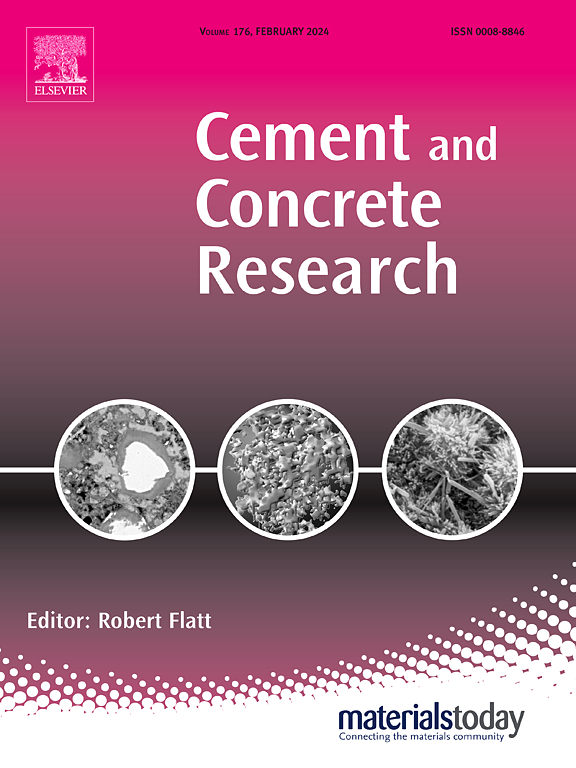An experimental and numerical study on the cracking of alkali-activated slag pastes induced by water immersion
IF 10.9
1区 工程技术
Q1 CONSTRUCTION & BUILDING TECHNOLOGY
引用次数: 0
Abstract
Cementitious materials can achieve desirable strength development and reduced cracking potential under moist or immersed conditions. However, in this work, we found that alkali-activated slag (AAS) pastes can crack underwater, with a higher silicate modulus showing more pronounced cracking. Chemically, the C-(N-)A-S-H gel in the paste with a higher silicate modulus showed a higher Na/Si ratio and a higher leaching loss of Na, which led to more significant structural changes and gel deterioration underwater. This triggered the propagation of cracks initially present in the material. Physically, the paste with a higher silicate modulus featured a denser microstructure, lower water permeability and higher pore pressure, which resulted in a steeper gradient of pore pressure in the matrix. Consequently, the concentration of tensile stress was simulated at the centre and the corner of the cross-section of the sample. As this simulated concentrated stress exceeded the flexural strength of AAS pastes, significant fractures at the centre and spalling at the corner occurred, consistent with the experimental observation. This work not only elucidated the cracking mechanisms of AAS materials underwater but also provided new insights into mixture designs for these materials under high-humidity conditions.
碱活性矿渣膏体水浸开裂的实验与数值研究
胶凝材料在潮湿或浸没条件下可以达到理想的强度发展和降低开裂潜力。然而,在这项工作中,我们发现碱活性渣(AAS)膏体可以在水下开裂,硅酸盐模量越高,开裂越明显。化学上,高硅酸盐模量的膏体中的C-(N-) a - s - h凝胶表现出更高的Na/Si比和更高的Na浸出损失,从而导致更显著的结构变化和凝胶在水下变质。这触发了最初存在于材料中的裂纹的扩展。物理上,硅酸盐模量越高的膏体微观结构越致密,渗透率越低,孔隙压力越高,导致基质孔隙压力梯度越陡。因此,拉应力的集中是模拟在中心和角落的试样的横截面。由于模拟的集中应力超过了AAS膏体的抗弯强度,中心出现了明显的断裂,角部出现了剥落,与实验观察一致。这项工作不仅阐明了AAS材料在水下的开裂机理,而且为高湿条件下AAS材料的混合料设计提供了新的见解。
本文章由计算机程序翻译,如有差异,请以英文原文为准。
求助全文
约1分钟内获得全文
求助全文
来源期刊

Cement and Concrete Research
工程技术-材料科学:综合
CiteScore
20.90
自引率
12.30%
发文量
318
审稿时长
53 days
期刊介绍:
Cement and Concrete Research is dedicated to publishing top-notch research on the materials science and engineering of cement, cement composites, mortars, concrete, and related materials incorporating cement or other mineral binders. The journal prioritizes reporting significant findings in research on the properties and performance of cementitious materials. It also covers novel experimental techniques, the latest analytical and modeling methods, examination and diagnosis of actual cement and concrete structures, and the exploration of potential improvements in materials.
 求助内容:
求助内容: 应助结果提醒方式:
应助结果提醒方式:


